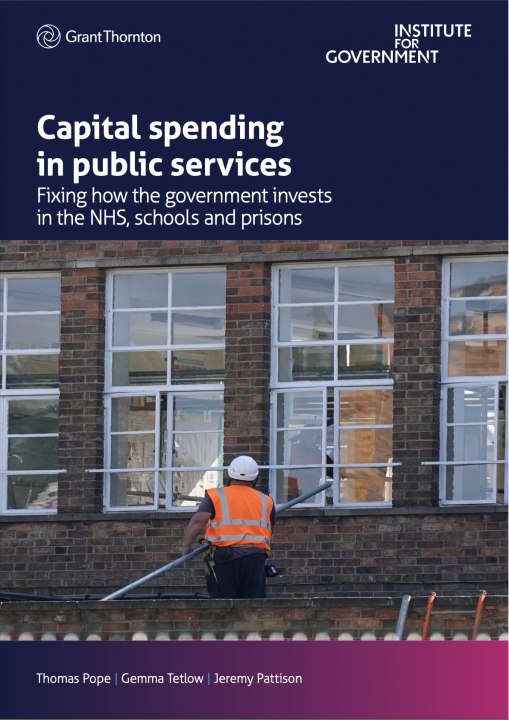A new Institute for Government report has outlined how a new approach must be taken to capital spending to stop service performance from continuing to falter.
The report, titled Capital Spending in Public Services: Fixing how the government invests in the NHS, schools and prisons, outlines the UK’s history of typically low capital budgets for the Department of Health and Social Care, the Department for Education, and the Ministry of Justice, and how this has impacted public service performance.

Capital budgets in the DHSC, DfE and MoJ were 18%, 17% and 69% lower in 2015-16, when compared with 2007/8. This has led to challenges over the number of patients in hospital waiting lists, the number of prisoners that are being kept in over-crowded cells, and some pupils being taught in inadequate conditions.
Whilst spending has increased over recent years, the report discusses how both the Labour and Conservative Parties are implying further cuts to capital spending, which will make it more difficult to decide between improving public services or investing in areas such as transport, research and development, and defence.
The report has also referred to a number of other contributing factors, including poor decision-making, that have led to the deterioration of public services. Some of this include the fact that there is a lack of understanding of current capital stock and future needs, politicians being drawn to larger, centrally dictated projects over smaller, local ones, and that the public sector does not work well enough with the private sector.
In order to try and solve the ongoing challenges, the report has suggested that the next multi-year spending review should provide a more capital-intensive mix of spending, as well as setting out clear objectives to guide decisions. Another recommendation has been made that would see government departments establishing formula-determined funding allocations for integrated care boards, large multi-academy trusts, and local authorities, to ensure that the funding covers the full length of spending reviews.
Image credit: iStock



















